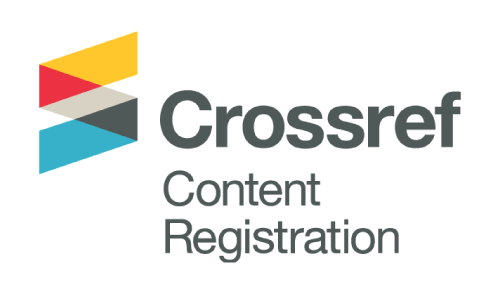Application of Binary Logistic Regression Model to Cancer Patients: a case study of data from Erbil in Kurdistan region of Iraq.
DOI:
https://doi.org/10.21271/ZJPAS.33.4.12Keywords:
Binary Logistic Regression, Odds Ratio, Probability, and Hosmer and Lemeshow Test.Abstract
In this paper, Binary Logistic Regression technique for fitting the best model for analyzing cancer diseases data is introduced using SPSS software based on forward stepwise procedures using different tests. The main objective is to investigate the last status of patients suffer from various types of cancer in Kurdistan Region of Iraq for the period 2010-2019 based on the main factors that contribute significantly to their last situation. A random sample of size 821 cancer patients from two main public hospitals (Rzgari and Nankali) in Erbil, where the patients take permanent and appropriate treatment, is selected of 619 alive and 202 dead. The results of the study showed that binary logistic regression is an appropriate technique to identify statistically significant predictor variables such as gender, age, cancer site and region to predict the probability of the last status (alive or dead) for each cancer patients. Moreover, it is deduced that despite the higher rate of cancer for female patients than the male; the chance for female cancer patients to be alive is more than male patients.
References
Abaye, D. 2019. A Review of the Logistic Regression
Model with Emphasis on Medical Research.
Journal of data analysis and information
processing, 7(4), 190-207.
Abdalrada, A., Yahya, O., Alaidi, H., Hussein, N., Alrikabi,
H., and Al-Quraishi, T. 2019. A Predictive Model
For Liver Disease Progression Based On Logistic
Regression Algorithm. Periodicals of Engineering
and Natural Sciences, 7(3), 1255-1264.
Abadi, A., hajizadeh, E., Pourhoseingholi, M. and Mojarad,
E. 2019. Comparison of Random Forest and
Logistic Regression Methods in Predicting
Mortality in Colorectal Cancer Patients and Its
Related Factors. Iranian Journal of Epidemiology,
(4), 375-383.
Bahadır, E. 2016. Using Neural Network and Logistic
Regression Analysis to Predict Prospective
Mathematics Teachers’s Academic Success upon
Entering Graduate Education. Educational
Sciences: Theory & Practice, 16(3), 943-964.
Bozpolat, E. 2016. Investigation of the Self-Regulated
Learning Strategies of Students from the Faculty of
Education Using Ordinal Logistic Regression
Analysis. Educational Sciences: Theory &
Practice, 16(1), 301-318.
Burns, R. and Burns, R. 2008. Business Research Methods
and Statistics Using SPSS.
Cristensen, R. 1997. Log-Linear Models and Logistic
Regression. 2nd edition, Springer-Verlag, New
York.
El-Habil, A. M. 2012. An Application on Multinomial
Logistic Regression Model. Journal of Statistics
and Operation Research, 8(2), 271-291.
Hosmer, W. and Lemeshow, S. 1989. Applied Logistic
Regression. Second Edition, Canada.
Huang, L. and Moon, R. 2013. What Are the Odds of That?
A Primer on Understanding Logistic Regression.
Gifted Child Quarterly, 57(3), 197–204.
Kleinbaum, D. and Klein, M. 2010. Introduction to
Logistic Regression. Springer Science+Business
Media. LLC
Mabula, S. 2015. Modeling Student Performance in
Mathematics Using Binary Logistic Regression at
Selected Secondary Schools A Case Study of
Mtwara Municipality and Ilemela District. Journal
of Education and Practice, 6(36), 96-103.
Morris, A. and Gardner, J. 1988. Calculating confidence
intervals for relative risks (odds ratios) and
standardized ratios and rates. British Medical
Journal (Clinical Research Ed.), 296(6632), 1313-
Nankani, H,; Gupta, S., Singh, S., Ramesh, S. S. S. 2019.
Detection Analysis of Various Types of Cancer by
Logistic Regression using Machine Learning.
International Journal of Engineering and
Advanced Technology (IJEAT), 9(1), 99-104.
Nelder, J. A. 1961. The Fitting of A Generalization of the
Logistic Curve. International Biometric Society,
(1), 89-110.
Neupane, R. P., Sharma, K. R., and Thapa, G. B. 2002.
Adoption of agroforestry in the hills of Nepal: a
logistic regression analysis. Agricultural Systems,
(3), 177–196.
Osborne, J. W. 2012. Logits and Tigers and Bears, oh my!
A Brief Look At The Simple Math Of Logistic
Regression And How It Can Improve
Dissemination Of Results. Practical Assessment,
Research, and Evaluation, 17(11), 1-10.
Pregibon, D. 1981. Logistic Regression Diagnostics. Annals
of Statistics. The Annals of Statistics, 9(4), 705-
Santner, T. J., and Duffy, E. D. 1986. A Note on A. Albert
and J.A. Anderson's Conditions for the Existence of
Maximum Likelihood Estimates
in Logistic Regression Models. Oxford University
Press on behalf of Biometrika Trust, 73(3), 755-
Şirin, Y. E., and Şahin, M. 2020. Investigation of Factors
Affecting the Achievement of University Students
with Logistic Regression Analysis: School of
Physical Education and Sport Example. SAGE
Open, 10, 1-9.
Sweet, S. A., and Martin, K. G. 2011. Data Analysis with
SPSS + Mysearchlab with Etext: A First Course in
Applied Statistics. Pearson College Division.
Vupa, Ö. and Çelikoğlu, C. 2006. Model Building in
Logistic Regression Models About LUNG
CANCER DATA. Anadolu University Journal of
Science and Technology, 7(1), 127-141.
World Health Organization. Available from
https://www.who.int/news-room/factsheets/detail/cancer. [Accessed
, March, 2021]
Yuri, P., Rochadi, S., and Danarto, R. 2016. A Device for
Predicting Prostate Cancer Risk: A Logistic
Regression. Journal of Prostate Cancer, 1(2), 1-5.
Yusuff, H., Mohamad, N., Ngah, U.K., and Yahaya, A.S.
Breast Cancer Analysis Using Logistic
Regression. IJRRAS, 10(1), 14-22.
Downloads
Published
How to Cite
Issue
Section
License
Copyright (c) 2021 Khwazbeen Saida Fatah , Zhyan Rafaat Ali Alkaki

This work is licensed under a Creative Commons Attribution 4.0 International License.












